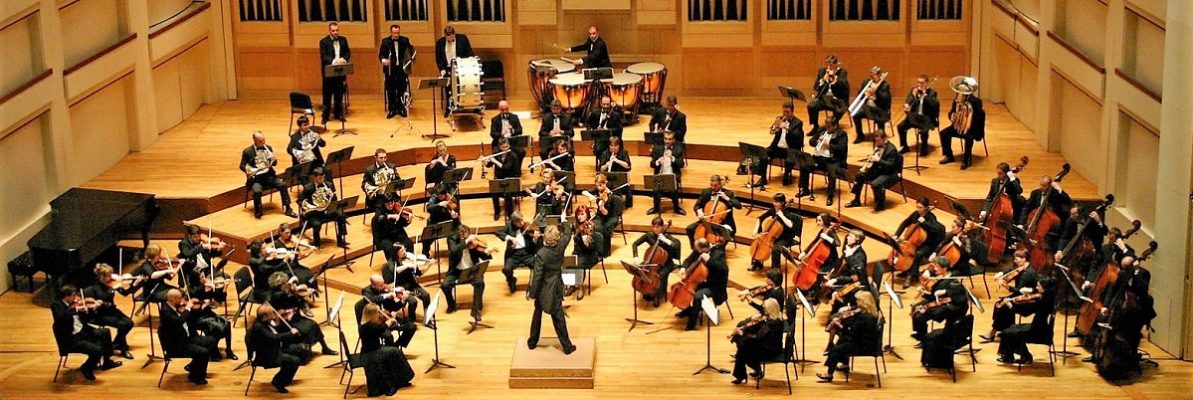New Playbook Offers Guidance on “Energy-Plus-Health” Programs
by Julie Michals and Ellen Tohn
Twentieth-century music giant Sergei Prokofiev wrote the timeless Peter and the Wolf to help teach about the orchestra. We thought it fitting to use Prokofiev’s approach to tell a story. But in place of Peter (his grandfather, the bird, cat, duck, wolf and hunter – all represented by types of instruments) our focus is the potential for energy efficiency and health care industries to play “music” together. (Perhaps a stretch, but stay with us . . .)
When an orchestra’s sections – the strings, woodwinds, brass and percussion – begin to practice, one hears a cacophony of mixed tempos and off-key notes. Over time, members of each instrument group listen to the others and hone their contributions. The conductor unifies the whole and shapes the sound. Eventually the instruments blend together in beautiful harmony.
The orchestra analogy came to mind for the just-published Energy Plus Health Playbook – where the cast includes:
- Energy players (energy efficiency program administrators [EE PAs] and implementers, home performance contractors) and low-income weatherization agencies (CAP agencies)
- Health players (hospitals, managed healthcare partners, community health workers, state departments of health)
- Decision makers who can create and support sustained funding for programs (policymakers and regulators)
Making Music Requires Practice
Energy and health industry sectors function separately and are “siloed” in how they provide services to their customers/patients. However, trends affecting the EE and health care industries are opening channels to work together more effectively to improve both energy and health outcomes. Both sectors face systemic challenges to – and emerging opportunities to improve – their existing customer and patient interactions and business models.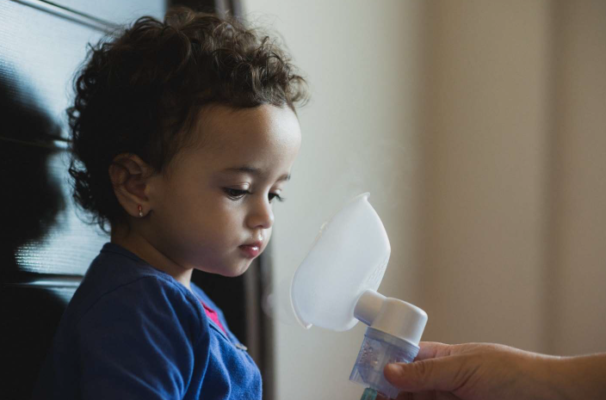
With Americans spending 90% of their time indoors (per the U.S. EPA), coordinating health and energy services in the home to improve indoor environments is a no-brainer. The health industry players are already there, so targeting social determinants of health (SDOH) and bringing the EE PAs and the energy workforce into the orchestra is timely. While these industries have traditionally not intersected, we are seeing a movement to coordinate, and even integrate, efforts.
When hearing an orchestra beginning to practice a new piece, we do not yet hear perfection; the piece is not quite in tune. Our orchestra of energy and health players is starting to practice. And if we can remove barriers across industries, we can help each sector advance their goals. Barriers have already been overcome at small or pilot scales, as described in the Playbook.
 The Playbook is designed primarily for EE PAs and associated stakeholders and decision makers. It will enable understanding of opportunities and options for engaging in healthy home assessments and work. Tips for how to get started are an invaluable aspect of what the Playbook’s authors offer.
The Playbook is designed primarily for EE PAs and associated stakeholders and decision makers. It will enable understanding of opportunities and options for engaging in healthy home assessments and work. Tips for how to get started are an invaluable aspect of what the Playbook’s authors offer.
The Soloists, the Quartet and the Orchestra
The Playbook offers tools, strategies, and resources to help energy stakeholders engage on health, to help guide the players to create new music together. To make tools accessible, the Playbook groups potential collaborations into three tiers, providing checklists to assess where a PA’s program may currently reside. The tiers are like musical ensembles:
- Tier 1 – players practice near each other, and hear each other
- Tier 2 – a small group, e.g., a quartet of instruments, plays together
- Tier 3 – a full orchestra achieves multi-layered sophistication
Tier 1
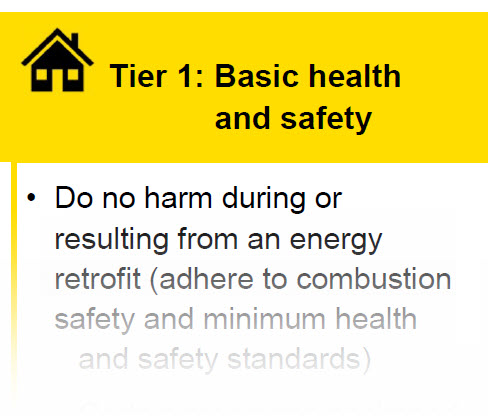 Energy and utility programs incorporate basic health and safety into programs.
Energy and utility programs incorporate basic health and safety into programs.
These programs are like “soloists” who know their instrument and seek to improve their performance. For energy programs, that can mean incorporating health and safety protections into your core work, which often include carbon monoxide (CO) testing and/or fire and CO alarm installations.
Tier 2
Energy programs engage with health partners to spur cross sector referrals.
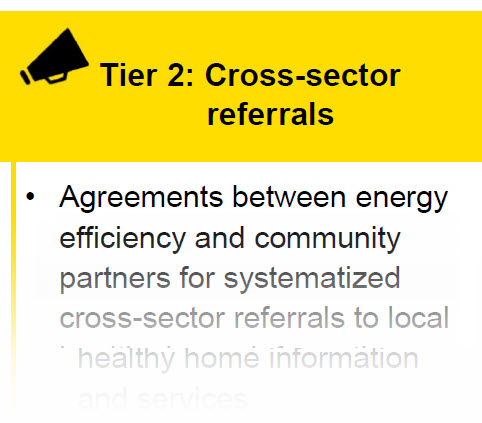 Here energy and health programs play in a quartet. The programs are skilled players who are now aware of each other’s notes, and who can create new beautiful sounds. The violin and viola know when they need to play softly to allow the cello to shine; similarly, energy partners operating in Tier 2 work with health partners to create tools to learn about client health needs and create systems to refer clients to local services. And, health partners know how to ask about energy needs and refer clients to energy services.
Here energy and health programs play in a quartet. The programs are skilled players who are now aware of each other’s notes, and who can create new beautiful sounds. The violin and viola know when they need to play softly to allow the cello to shine; similarly, energy partners operating in Tier 2 work with health partners to create tools to learn about client health needs and create systems to refer clients to local services. And, health partners know how to ask about energy needs and refer clients to energy services.
Tier 3
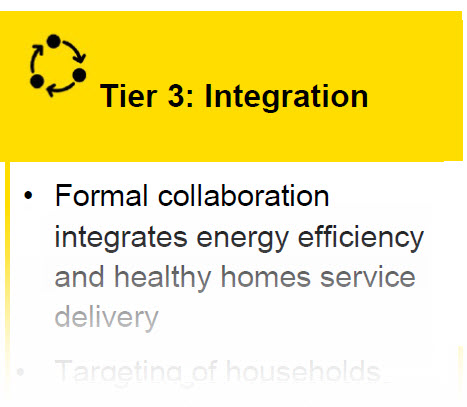 Partners offer integrated energy plus health services.
Partners offer integrated energy plus health services.
This orchestra delivers a symphony with a multi-layered sound. Energy and health programs can follow a new rich score, relying a conductor to guide the effort. This deeper level of integration is frequently focused on individuals with health conditions, like asthma that can be exacerbated by home conditions and where energy plus health repairs can reduce symptoms and the frequency of health care use and hospitalizations.
Health partners increasingly seek to leverage the expertise of programs with the capacity to improve indoor environmental conditions to supplement traditional patient services. Energy programs are expanding their health capacity and expertise, with new credentials like the BPI Healthy Homes Evaluator, to provide energy-plus-health services and engage with hard to reach customers.
Playbook Resources
It’s often hard to play a new piece or to try new instruments, as you just don’t know where to start. The Playbook has curated examples and provides sample forms to conduct home assessments, set up referral networks, provide client outreach, secure client consent and data use agreements, and structure evaluation protocols. Case studies offer examples in each tier to showcase programs in action: Tier 1 (Columbia Gas of Ohio, WarmChoice®); Tier 2 (Connecticut Children’s Healthy Homes; Fort Collins, CO; Vermont One Touch); Tier 3 (Efficiency Vermont Healthy Homes; Washington Weatherization Plus Health; North Berkshire Healthy Homes (Pittsfield, Massachusetts); New York State Value Based Payment).
Closing Movement
Whether as soloists, quartets or orchestras, we encourage the energy and health industries to play together and make music. And while we won’t equate the different industry players to particular instruments or characters in Peter and the Wolf, we encourage the industries to learn about each other – not only the range of players, but their respective needs, goals and business models. The Playbook provides guidance on varying degrees of how the industries can coordinate and learn from programs on the ground. We hope you find it useful, and we look forward to your feedback.
You’re also invited to a webinar on September 9, 2019: Sign up now to hear from the Playbook authors and case study representatives speak about their programs. Register here.
–Julie Michals is a Director at E4TheFuture. Ellen Tohn is with Tohn Environmental Strategies.
The Energy Plus Health Playbook was written by VEIC and was funded by E4TheFuture, with Ellen Tohn serving as technical advisor.
